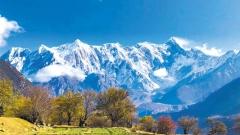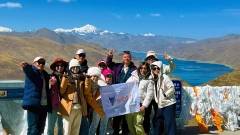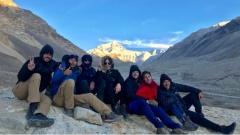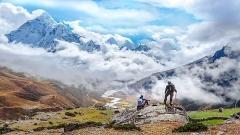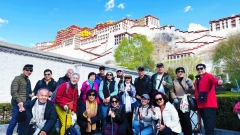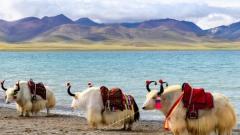Nestled in the remote heights of Tingri County, Shigatse Prefecture, Rongbuk Monastery stands as both the highest Buddhist monastery on earth and one of the most spiritually profound destinations for travelers and pilgrims alike. Perched at a staggering altitude of 5,154 meters (16,910 feet), this sacred site offers an unparalleled blend of Himalayan grandeur, centuries-old religious tradition, and a living legacy of Tibetan culture. For those seeking both adventure and inner reflection, Rongbuk provides an experience unlike any other.
Rongbuk Monastery Tibet Location & Overview
Location: Rongbuk Valley, Tingri County, Shigatse Prefecture, Tibet Autonomous Region, China
Altitude: 5,154 meters (16,910 feet) above sea level
Opening Hours: Daily, 9:00 AM – 4:00 PM
Admission Fee: CNY 35 per person
How to Get There:
- Tour Group: Many travelers opt to join an organized Tibet tour that includes Rongbuk Monastery and Everest Base Camp in its itinerary.
- Independent Trekking: Adventurous visitors may trek from Dingri County (also spelled Tingri), following the rugged paths that wind upward through dramatic Himalayan landscapes.
Best Time to Visit:
- Spring (April–May): Mild temperatures and clear skies make this season ideal for Everest views.
- Autumn (September–October): Stable weather patterns and colorful skies draw photographers and pilgrims alike.
Founded in the early 20th century under the Nyingma (“Ancient”) school of Tibetan Buddhism, Rongbuk Monastery owes its origins to Lama Ngawang Tenzin Norbu. Although precise records are sparse, local lore tells of hermits and solitary meditators inhabiting the valley long before the formal establishment. When the first British expedition to Everest arrived in 1921, they were struck by the monastery’s serene atmosphere and the tame wildlife—blue sheep grazing freely near the prayer halls.
During the turmoil of the 1960s Cultural Revolution, Rongbuk suffered extensive damage, with its buildings razed and priceless murals defaced. Beginning in the late 1980s, restoration efforts reignited the monastery’s vibrant spirit. Today, the rebuilt complex and its prominent stupa stand as enduring symbols of resilience and faith.
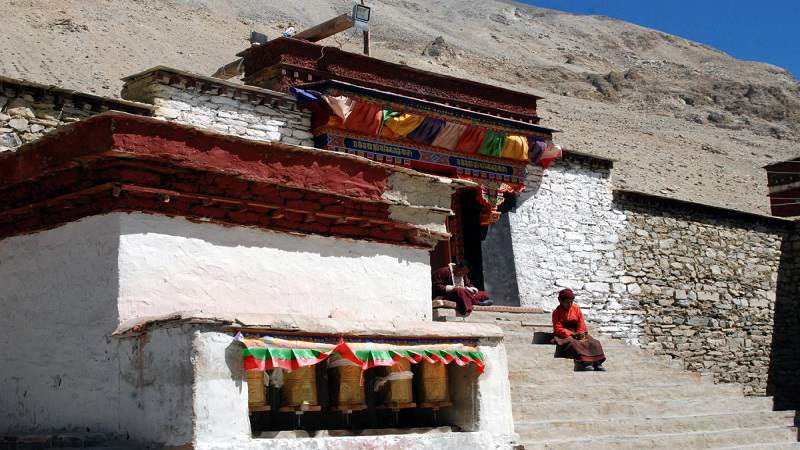
Rongbuk Monastery
Architectural & Artistic Marvels of Rongbuk Monastery Tibet
Rongbuk Monastery’s humble stone-and-wood structures are masterfully adapted to their harsh environment:
Traditional Tibetan Design: Low, flat roofs and inward-sloping walls provide stability against strong mountain winds.
Vibrant Facades: Walls painted in deep reds and ochres contrast sharply with the glacial backdrop.
Prayer Wheels: Dozens of steel prayer wheels line the courtyards. Pilgrims spin them while reciting mantras, believing each rotation accumulates spiritual merit.
Exquisite Murals & Thangkas: Inside the main assembly hall, visitors can admire restored murals depicting Buddhist deities, mandalas, and scenes from the Buddha’s life—art forms that serve as visual guides for meditation.
Statues & Stupa: A towering stupa graces the entrance courtyard, while life-size statues of the Buddha and revered teachers occupy the inner sanctum, offering focal points for devotion.
Festivals & Rituals of Rongbuk Monastery Tibet
Rongbuk’s calendar sparkles with colorful festivals that draw pilgrims from across Tibet:
- Saga Dawa (Fifteenth Day of the Fourth Tibetan Month): Celebrates Buddha Shakyamuni’s birth, enlightenment, and parinirvana. Masked dances (Cham), prayer processions, and butter sculptures fill the courtyards.
- Tibetan New Year (Losar): Beginning on December 29th of the Tibetan calendar, Losar festivities include offerings to benevolent deities and placation of wandering spirits.
- Annual Buddhist Dance Ceremony (15th April, Tibetan Calendar): A three-day masked dance festival honoring Shakyamuni’s birth, featuring elaborate costumes and sacred music.
The Mighty Rongbuk Glacier & River
A short walk beyond the monastery leads to the famed Rongbuk Glacier:
- Length: Approximately 26 km, making it the largest glacier north of Everest.
- Thickness: Averages 120 m, with depths exceeding 300 m at certain points.
- Three Converging Glaciers: Tributaries from Everest’s northern slopes merge into the fast-flowing Rongbuk River, whose icy waters reflect the glacial blue.
Not only is the glacier a breathtaking sight, it also feeds the monastery’s water supply—though warming trends pose long-term concerns for both glacier health and the region’s water security.
Planning Your Visit to Rongbuk Monastery Tibet
Accommodation
- Monastery Guest Rooms: Basic dormitory-style lodging for 4–5 people per room.
- Nearby Towns: For more comfortable stays, consider Shegar (50 km away) or Old Tingri, where guesthouses offer private rooms and warm meals.
Travel Tips
- Acclimatize Gradually: Spend at least two days at lower elevations (e.g., Shigatse or Lhasa) to reduce altitude-sickness risk.
- Permits Required: Foreign visitors must obtain a Tibet Travel Permit via a registered tour operator.
- Dress Respectfully: Modest, layered clothing is recommended. Remove hats inside prayer halls and keep noise to a minimum.
- Bring Supplies: Limited dining options mean carrying snacks, high-energy bars, and a refillable water bottle.
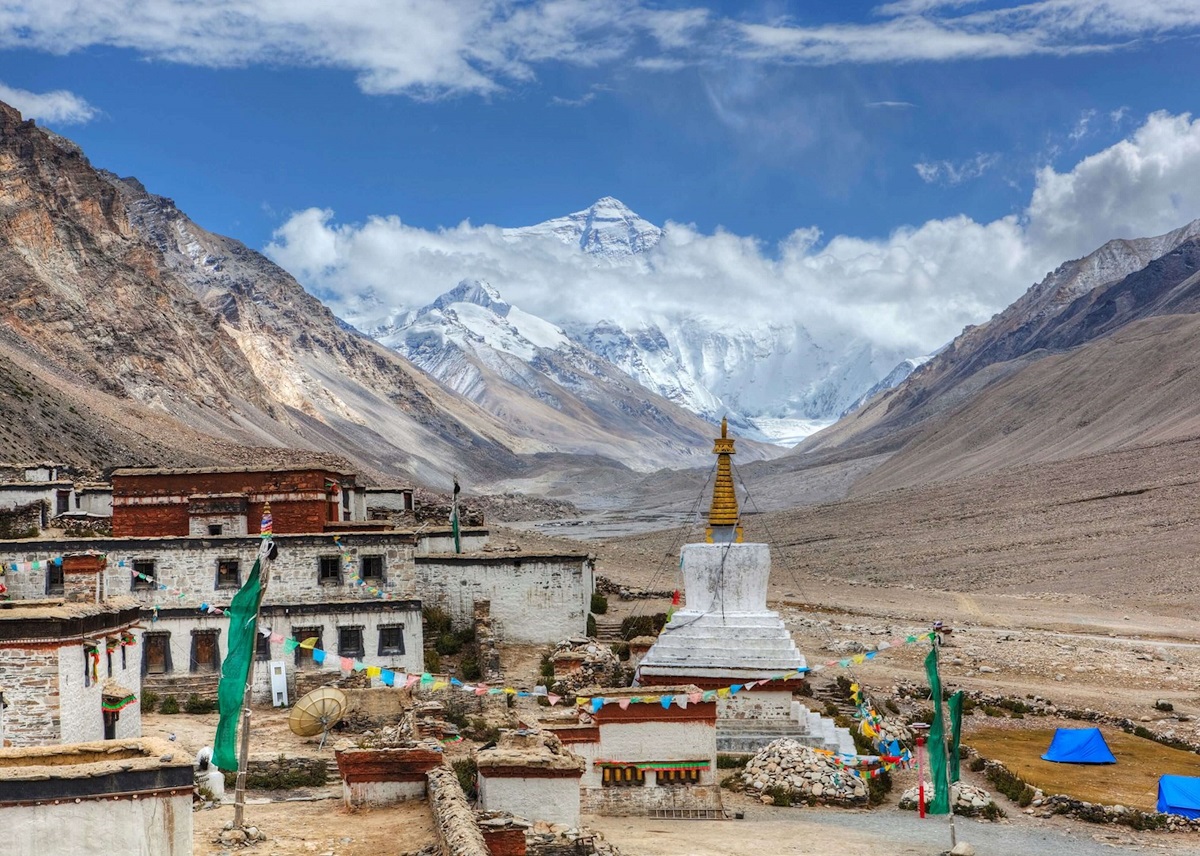
Rongbuk Monastery and Mount Everest
Why Rongbuk Monastery Matters Today
Rongbuk Monastery remains a living testament to the intertwining of nature, spirituality, and human resilience:
Spiritual Anchor: For countless pilgrims, the monastery is a place to seek blessings and inner peace before attempting the formidable Everest climb.
Cultural Beacon: The restored murals, statues, and ceremonies preserve a rich heritage that survived decades of upheaval.
Environmental Warning: Retreating glaciers and changing weather patterns remind us of the fragile balance in high-altitude ecosystems.
Community Hub: Monks and nuns continue to provide education, spiritual counsel, and social services to surrounding villages.
Experience the Spiritual Gateway with China Dragon Travel
For those inspired to embark on this once-in-a-lifetime pilgrimage, China Dragon Travel offers expertly guided tours to Rongbuk Monastery and Everest Base Camp. With decades of experience, our itineraries prioritize safe acclimatization, respectful cultural engagement, and unforgettable Himalayan vistas. Let us help you connect with the living soul of Tibet—where every prayer wheel spun and every prayer whispered becomes part of your journey toward inner peace.
Join China Dragon Travel on an unforgettable spiritual and cultural adventure to Rongbuk Monastery—the world’s highest monastery and the gateway to Mount Everest.




